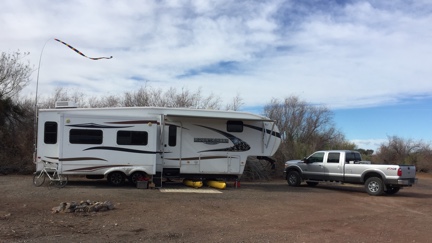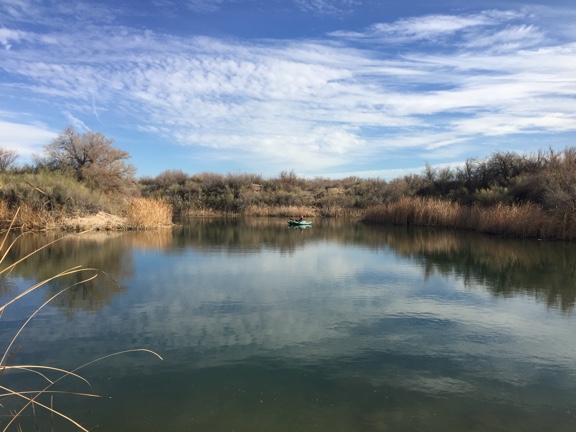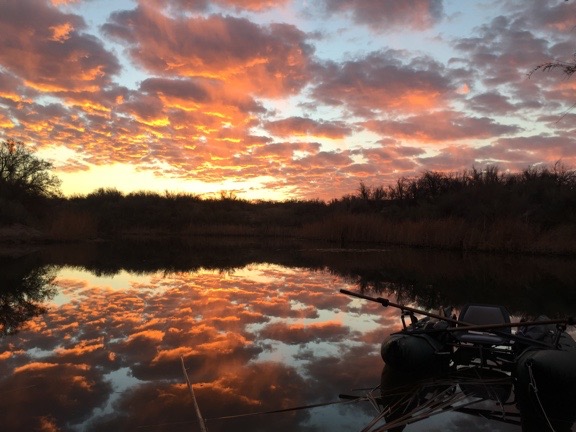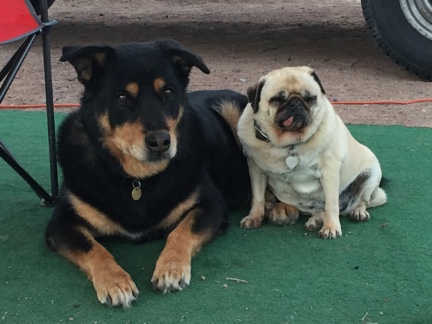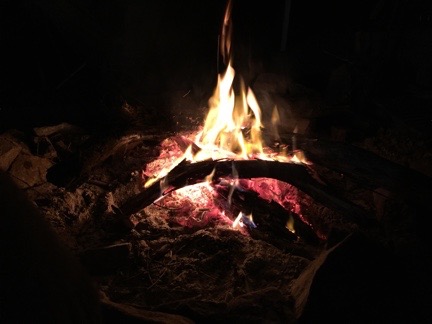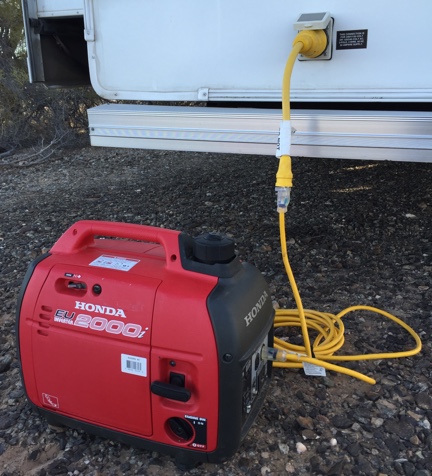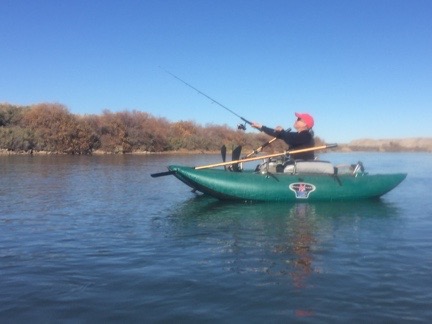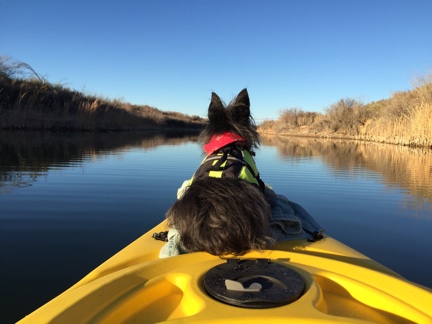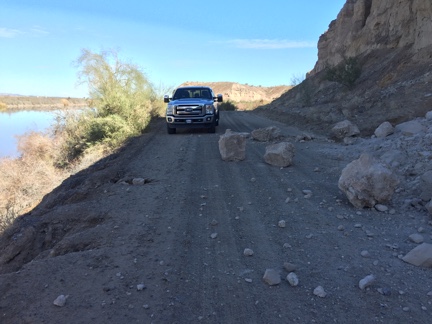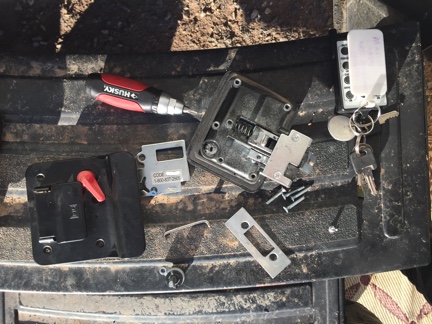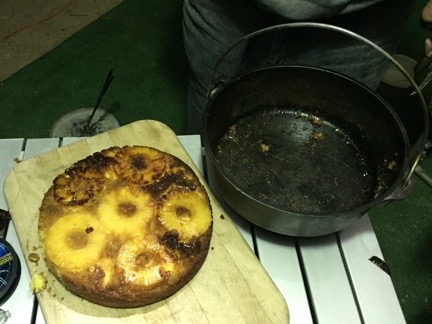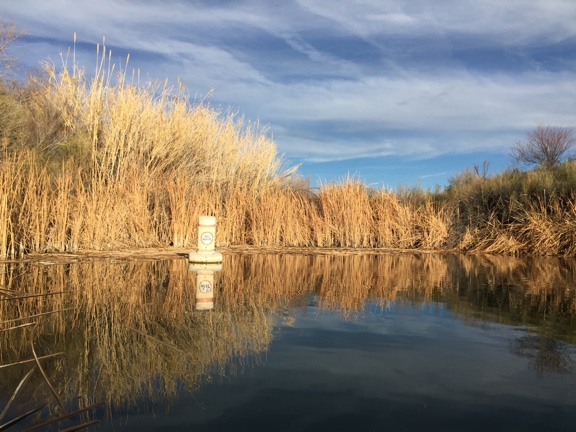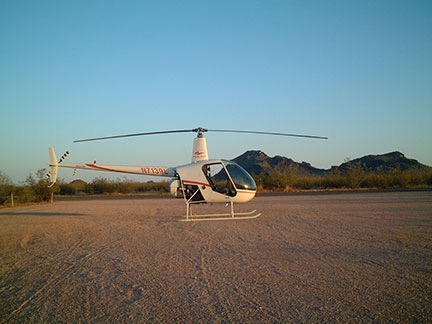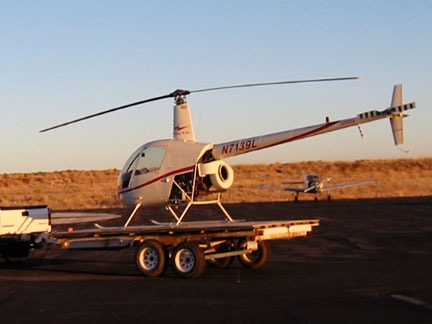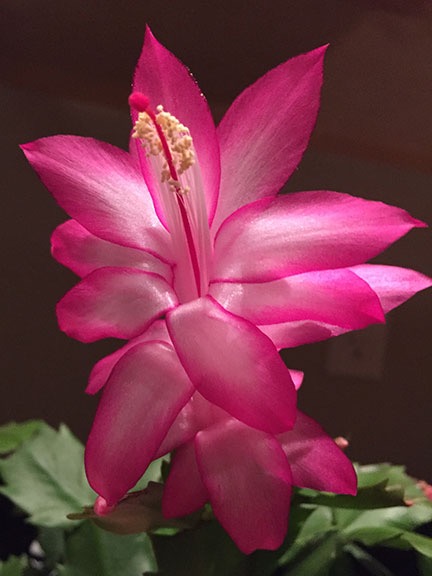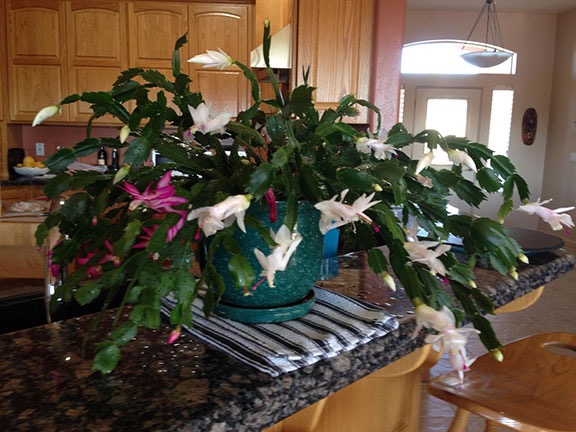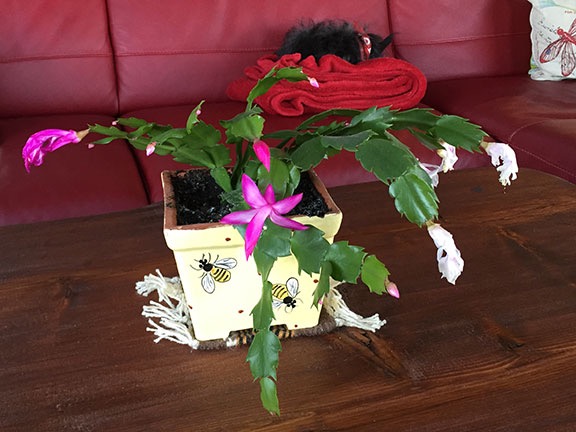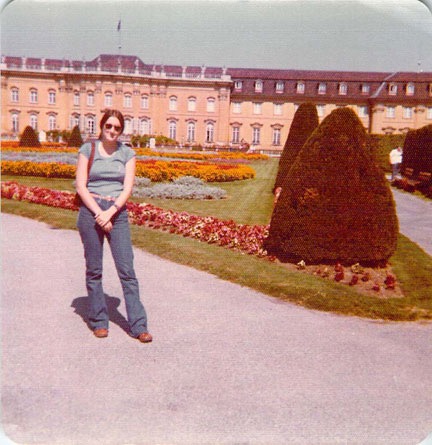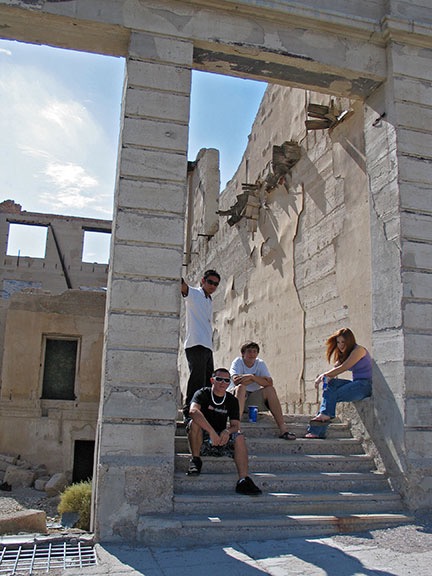Camp in the desert, walk around dusty market stalls, buy cheap stuff you likely don’t need, soak up the sun, watch amazing sunrises/sunsets, repeat.
– Introduction
– The Colorado River Backwaters
– Quartzsite
– Wickenburg
– Phoenix
– Home
– Back to the Backwaters
– Return to Wickenburg
– Valley of Fire
– Death Valley
– Back to Work
Quartzsite, AZ, is a special place — special in its oddity. It’s a small town on I-10 about 18 miles east of the Colorado River. With a total area of about 36 square miles, the 2010 census counted 3,677 people. Those are “permanent” residents, of course. During the month of January, some estimates say the population swells to about 100,000.
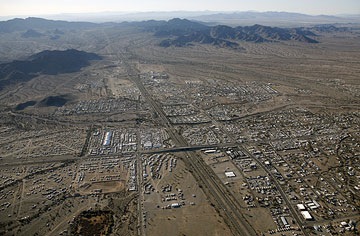
A broad look at Quartzsite from the air in January 2008.
You read that right. 100,000 people in a town where less than 4,000 normally live.
Where do those people stay, you might wonder? The answer is obvious if you drive down I-10 through the area in January: in RVs parked in a handful of RV parks but mostly all over the desert on the BLM land that surrounds the town.
 A closeup looking almost straight down at groups of RVs.
A closeup looking almost straight down at groups of RVs.
The desert around Quartzsite is relatively flat with a rocky surface that makes it easy to drive through. Over time, “roads” have been made through the area that lead to suitable campsites. RVers — mostly retirees in big motorhomes or dragging giant fifth wheel trailers like mine — gather in clusters for miles in every direction. This is pretty amazing from the air — indeed, I took a French photographer out over the town back in 2008 and he sent me a handful of the resulting photos for my blog.
Why do they come? That’s a pretty good question. I think there are a few reasons:
- It’s a cheap place to stay. Camping on BLM land is usually free for up to two weeks, although Quartzsite has a handful of “long term” areas where you can stay longer for a $40 fee. (Of course, there are so many RVs out there in the free area that it’s unlikely a BLM ranger is actually keeping track of the length of your stay.) Retirees — and a lot of other people I know, including me — like free. Keep in mind that to get this free camping with a certain level of comfort, you need an RV that’s fully contained with water, power, propane, and sewer holding tanks. That can be a huge investment. You can haul in water and propane, have a solar panel and/or generator for power, and minimize use of your plumbing. I talk a little about what it’s like to camp off the grid in the previous post of this series, “The Colorado River Backwaters.”
- Other snowbirds go there. If there’s one thing I noticed about snowbirders it’s that they like to gather in popular places. Often Quartzsite is the meetup location of snowbirds from all over the west to see each other annually.
- There are “shows.” The entire town is like a giant flea market with all kinds of merchandise for sale, usually cheap. But among those ragtag markets are also scheduled events like those at Tyson Wells: a gem and mineral show, an art show, a classic car show. The big show in January, which lasts 10 days and gives RVers a good excuse to come is the big RV show. Indeed, I bought the Mobile Mansion in Quartzsite back in 2010.
I’ve written extensively about Quartzsite throughout this blog since I’ve been going there even longer than I’ve been blogging. Search for “Quartzsite” to see what else I’ve written.
I should point out that Quartzsite has changed dramatically since I began going there in the early 2000s. There used to be more, better, bigger shows — Cloud’s Jamboree and The Main Event come to mind. Prices for goods and services were lower and the whopping 10.1% sales tax wasn’t looming large in every transaction. There didn’t seem to be as much junk. While back in the mid 2000s, there was plenty to do and see on the north side of the freeway, these days it’s a collection of seasonal RV dealers and clusters of booths resembling yard sales more than cohesive shops or show booths.
Friends of mine who have been selling their artwork or other merchandise at shows in Quartzsite since the 1990s tell me that the main reason for the change is greed — the town’s primary source of revenue is sales tax collected during the winter months from tourists. Little by little, good shows have died off to be replaced by seasonal RV sales lots. The town collects huge sums of money from the sale of these high-ticket items. God knows what they do with it. Off-season, the town is pretty much a shithole (if you’d pardon the expression) with a pair of truck stops and a handful of fast food joints the only reason to stop there. Year after year, the roads remain in poor condition and the lots where the shows are held are as dusty and dirty as ever. And traffic in the middle of January? Don’t get me started.
At least it was warm and sunny.
Getting to Quartzsite
Understand that I didn’t need to stay in Quartzsite to visit the shows and buy the odds and ends I wound up buying. We were camped out in the backwaters of the Colorado River, which was about a 30- to 40-minute drive from there. But my friend Janet is an artist and she was booked to show/sell her work at Tyson Wells Sell-A-Rama. She’d park her little RV in her booth space — as most other vendors did — where she’d have a full hookup and be able to keep an eye on things for the 10 days of the show. This show runs the same time as the big RV show and is right across the street, so it has the potential for the most visitors and best sales.
Her husband, Steve, wanted to be close but had the horses with him. He decided to relocate to the BLM land east of town where he could set up camp for free. I didn’t want to stay out at the backwaters by myself, so I’d camp out with Steve and the horses. Janet left on Wednesday; we’d leave on Thursday.
I’d packed up the Mobile Mansion on Wednesday afternoon, leaving just a handful of things outside to put away in the morning. I’d also hooked up the truck so I was all ready to move out. My goal was to stop and get the Mobile Mansion washed, dump the holding tanks, and replenish my on-board fresh water supply on my way to Quartzsite. So on Thursday morning at about 8 AM, after making coffee for myself and Steve, I finished packing up, closed up the RV slides, and headed out.

Here’s my rig, ready to move out just after dawn on Thursday morning.
Steve remained behind to get the horses on board his trailer, gather up his fencing, and pack up. He’d meet me in Quartzsite at Tyson Wells.
The Mobile Mansion was filthy. Not only had it gathered dirt and dust on the 2 years it had been in almost constant use on my property, but it had an extraordinary amount of road dirt on its bottom half — especially in front — from my long drive down to Arizona from Washington. I’d spotted a truck wash at the Ehrenberg exit of I-10 when I’d come into camp on January 2 and had walked over to ask if they did RVs. I got a quote of about $45 to wash the entire rig — $55 if I wanted my truck washed, too. It was too good a deal to pass up. The trick was to get there early enough in the day that I didn’t have to wait behind someone else.
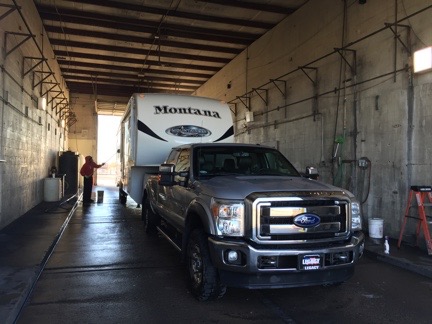
Here’s my truck and the Mobile Mansion getting washed at a truck wash.
I was the first one there at 8:15 AM that morning. I pulled in, put Penny on a leash, and walked over to the Flying J truck stop next door, leaving my rig in the hands of two young guys.
Someone on Twitter asked if “they use Mexicans to wash trucks.” I replied that I believed the guy doing the work was the actual owner. He was a heavyset man in his late 20s who looked to be of hispanic heritage. But he spoke English with no accent and was extremely polite. His co-worker was a young, thin black guy of about the same age with the same excruciating politeness. I don’t think I’ve ever been addressed as “ma’am” so many times in such a short period of time.
The Flying J had a Cinnabon kiosk inside. I like Cinnabon, but I don’t like the fact that they’re usually smothered in sticky, super-sugary icing. I asked at the counter and learned that if I waited until a fresh batch came out of the oven, I could get them with the icing on the side. So that’s what I did. Seven minutes after arriving, I walked out with four steaming hot cinnamon buns in a box. I’d add a bit of icing to one and enjoy it in the sunshine while waiting for my rig to be washed, then have the others for dessert or breakfast over the next two days.
The truck and trailer took about a half hour to wash. They came out great. I paid the bill and included a $10 tip and headed out again.
Our next stop was across the freeway at the convenience store “mall” where we’d been buying lottery tickets and filling water jugs. They had a dump station there where I could dump my holding tanks and fill my water tank. It took a bit of piloting to get my big rig into position, and even then I barely had enough sewer hose to reach the dump. But once I was set up, the job went quickly.
When I was finished and all the hoses had been stowed, I got on I-10 and headed east. It wasn’t a long drive, although traffic at the first Quartzsite exit was already starting to build at 10 AM. I headed east along the frontage road and turned into the parking lot on the west side of the Tyson Wells show grounds. Fortunately, the parking lot was mostly empty. I was able to turn the rig around (without backing up!) and park it in a large RV spot facing the exit. I locked up, put Penny back on a leash, and headed into the show grounds.
Tyson Wells has one show after another starting in December. So although the big Sell-A-Rama wasn’t due to start until the next day, there were already plenty of vendors set up on the east end of the show grounds. I found Janet’s booth, where Steve was already helping her set up. They’d found some almost new carpeting dumped in a dry wash nearby and had scavenged a few very large pieces in excellent shape to use for the booth floor. (Janet had other carpeting she normally used, but this new stuff was not only nicer, but it matched her booth walls.) We worked together for a while and then Penny and I wandered off to get a bite to eat, returning with some fresh fry bread drizzled with honey and sprinkled with cinnamon sugar.
My Snowbird Stay in Quartzsite
It was mid afternoon before Steve was ready to move on. Penny and I waited for him to pass us in the parking lot with his truck and horse trailer, then pulled in behind him. We continued east on the frontage road for about a mile or two, then turned right onto one of the “roads” out into the desert. We headed almost due south along a pretty easy-to-follow roadway, crossing a few shallow dry washes along the way. On either side of us were hundreds of RVs, already parked and set up — hundreds more would arrive over the next few days. Our goal was to be as far away from these clusters of RVs as possible. We knew from experience that too many these people liked to run their generators for hours on end, especially in the evening, and we simply didn’t want to listen to them. Besides, Steve wanted to set up the horses as far as he could from people who might bother them. The farther we went, the less likely people would come out our way.
This has always been my goal when camping out at Quartzsite — even the few times I did it with my wasband. It amazes me that so many people would be satisfied living in crowded communities nearly right on top of the noisy freeway when they could drive a half mile farther into the desert for quiet and privacy. But it’s a good thing they do. That means fewer people out where we want to be.
Steve picked a place and parked. I parked nearby, checked the level, put down two leveling blocks, and parked the Mobile Mansion’s driver side tires on them. Then I went about setting up camp.

Setting up camp consisted of putting up my wind ribbon, setting out a mat, and taking out my barbecue grill.
I’ll be honest — I wasn’t interested in doing too much unpacking. The trouble with living on the fringe is that there are fewer people out there to keep an eye on things. Our closest neighbors were what Janet refers to as “rainbow kids”: young, hippie-like people living out in the desert. Apparently some of them aren’t adverse to appropriating things they find in unattended camps. We made friends with our local rainbow kids right away, but Steve still didn’t trust them. And he didn’t want to leave the horses alone. So for the next few days, one of us would be in camp almost all the time.
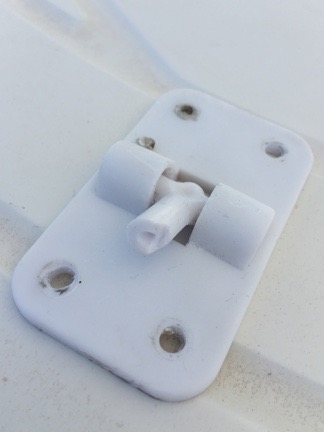
Finding a replacement for this part would have been difficult anywhere else. But in Quartzsite, I had it replaced within an hour of finding it broken.
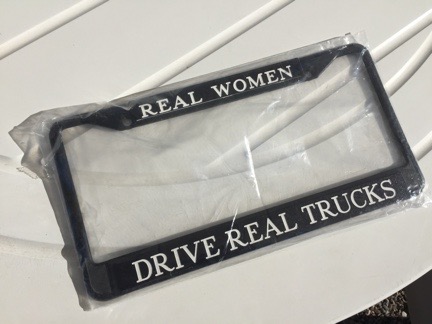
I’ve been buying custom license plate frames from the same booth in Quartzsite for years. This one is (obviously) for my truck.
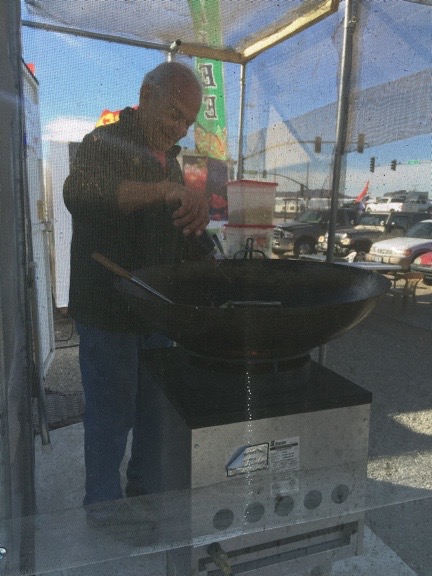
With just two items on his menu — fried rice or fried noodles — the Wok Man makes good, fresh food in a screened-in wok.
I discovered almost immediately that the plastic do-dad that holds the RV door open when parked had snapped off, likely in transit put possibly during the RV wash. Anywhere else, this would have been a royal pain in the butt, but in Quartzsite during January, it wasn’t a big deal because of all the RV parts dealers there. I set off with Penny to get that part replaced, pick up a license plate frame I’d ordered the previous week, grab some lunch, and get the water jugs filled at Janet’s campsite for the horses. Along the way, I found an RV windshield repair guy set up in a motorhome alongside the road and had a chip in the truck’s windshield repaired before it could crack.
And that’s the thing I like about Quartzsite — if you know the place well enough, you can find just about anything you need, normally at a fair price. (Okay, maybe not food.) And you can walk from place to place. I left my truck at the chip repair person’s spot and walked to get the license plate frame, replacement part, and lunch. When I walked back, the truck was done. During the winter season, it’s a lot like a little city full of goods and services.
In the evening, it got very dark out our way — so dark that Janet had trouble finding us when she came to join us for dinner. We didn’t have firewood, so we couldn’t have a campfire. The magic of the backwaters was clearly absent in Quartzsite.
I should mention here that Quartzsite treated us to amazing sunsets and sunrises nearly every day. In the beginning, I took photos. But by the end of my stay, I didn’t even bother.

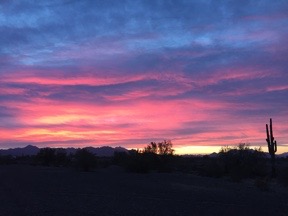
A beautiful sunset on Thursday was followed by a beautiful sunrise on Friday. And so on.
On Friday, I went to see the Tyson Wells show, with every intention of checking out the RV show in and around the huge tent. I bought a few things I wanted or needed — bungee balls, disposable gloves, carabiners, small tools, Dremel bits, kitchen gadgets, etc., etc. There’s no shortage of this stuff in Quartzsite and it’s all cheap, mostly because it’s all made-in-China grade. Most of the vendors who sell this kind of stuff also give away DC flashlights that you can keep in your car’s power port to charge and have handy when you need it. I managed to collect three of them and gave one to Steve.
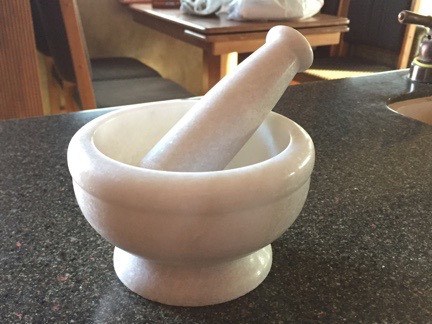
I bought this marble mortar and pestle from a rock shop for only $6.
One of the better buys was a marble mortar and pestle. I thought I’d brought the one from my Arizona home, but I can’t find it in any of my boxes so I likely left it behind. The one I bought from a rock shop is the perfect size for grinding nuts or spices and was on sale for only $6. How can you beat that?
I visited Janet in her booth. She’d been pretty busy and expected to get a lot busier the next day. The booth looked great, as usual, and she had lots of beautiful original art to share including her matted and embellished framed paintings on feathers, spirit feathers, and canvas artwork. She really does beautiful work.
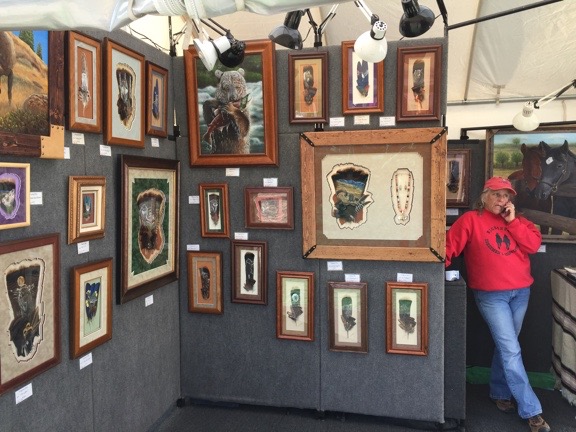
Janet’s booth at Tyson Wells.
I was a bit disappointed when I went over to the RV show and discovered that it didn’t open until the next day: Saturday. I dreaded dealing with the weekend crowds and planned to return on Monday.
I got back into the truck and went across the freeway to the north side of town. I was hoping to find some other small shows there, but most of what I found was just plain junk. I did notice a lot of RV dealers, though, and figured I’d start visiting them the next day. Although the Mobile Mansion has not been sold, I’m already thinking about its replacement and wanted to get a good idea of what was out there.
Before heading back, I did check out an area of shops on the far west side of town, on the north side of the freeway. One of the shops specialized in flags and wind streamers, but also had an amazing selection of brand new, colorful neon signs.
Years ago, when I lived in New Jersey, my future wasband bought me a neon sign as a gift and it hung in our living room. It was big and orange and said “Live Entertainment.” I later got a second sign but never got a power supply for it. When we moved, we packed up the signs. But we never unpacked them in Arizona and, to my knowledge, they remained packed in the garage when I moved out in May 2013. I simply did not like either sign enough to take it with me to my new home.
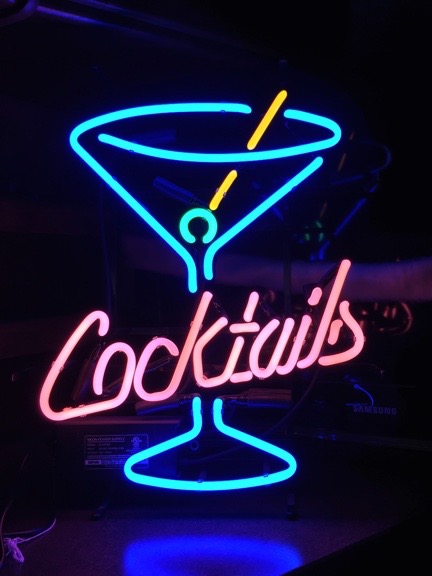
How could I resist? Here’s what my new sign looked like set up in the Mobile Mansion briefly before I packed it away to keep it safe until we got home.
But I still love neon, so when I saw the Cocktails sign, I had to have it. The price was fair and the owner of the shop accepted credit cards. I almost bought a second sign — it said “Ford Tough” and had the Ford logo and I thought it would be fun to hang in the garage — but despite a bunch of bargaining, I just couldn’t justify the additional expenditure. Besides, I didn’t want anyone to think I was Ford brand loyal. I’m not. So I left with just one sign.
But the shop is open through February….
On Saturday, I went RV shopping. I stopped at several dealers, looked at several RVs, and wasn’t struck by anything of interest. I spoke to several managers about them buying my RV or me leaving it on consignment for a few weeks but no one was offering any deals worth considering. They were there to sell their inventory, not add to it or sell mine. I understood that and despite one really insulting offer, generally respected it.
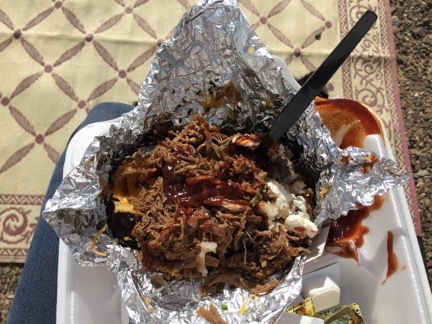
Sinfully good.
I made one more stop before heading back: the smoked turkey leg booth near the RV show. I bought a turkey leg for later and a fully dressed baked potato with smoked brisket on top for lunch. Yum.
I got back to the campsite by noon so Steve could spend the day helping Janet in her booth. It was a dull afternoon. I regretted doing all my maintenance chores at my last campsite — they would have helped kill time while I horse-sat in Quartzsite.
On Sunday, I didn’t know what to do. I’d seen everything in Quartzsite that I wanted to see except the RV show. But it was Sunday and it would be crowded and I hate crowds.
But maybe if I went early enough?
I left the campsite at 9 AM and headed straight to the RV show. I got a good parking spot out on the road and bee-lined it to the big tent. Things were just opening up and there was no crowd. I bought a breakfast burrito with eggs, cheese, and machaca, and walked the perimeter of the tent while I was eating it.
There was quite a bit to see, but not much of it was of any interest to me. I did get a good demo of LED lighting that would likely save a lot of power (and spare me the use of a generator) and see an interesting tool that precisely calculated angles for wood cuts. I also saw some motorcycle bumper lifts that would make it possible to take along my motorcycle on future RV trips — if I was willing to spend $4K on the hardware and installation.
Inside the tent was disappointing, as usual. Too many vendors selling blenders and cookware and microfiber cleaning cloths. Too many booths for back pain and “natural remedies.” I think a quarter of the booths were for RV parks or related time-shares. Anything available inside that was also available outside the tent cost 25% to 50% more and that was 25% or 50% more than you could get it across the street at Tyson Wells Sell-A-Rama.
Two things of interest:
- Amazon’s Camperforce program, which gives seasonal warehouse jobs with full hookup RV sites to full-time RVers. This program would actually be perfect for me, keeping me busy for November and most of December while earning some money and meeting people. Trouble is, the closest location is in Texas and I really have no desire to go to Texas with the Mobile Mansion.

A portable fire pit might make a good centerpiece for my patio table.Camco’s Little Red Campfire is a propane fire pit that can be packed into a can. While it might be fun for camping, what interested me is its potential use for adding a propane fire pit to the table on my deck. They were selling for just $75, which turned out to be a very good price.
I goofed off a bit more, visited Janet, bought some dates and other odds and ends, and headed back to camp to give Steve a chance to get out.
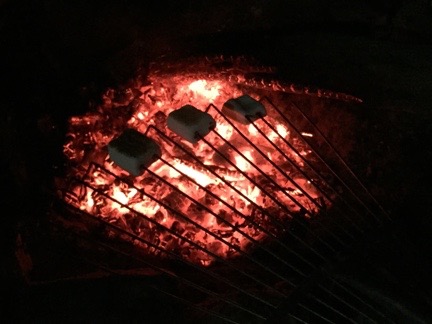
Turns out that a collapsible RV rake makes a good tool for roasting marshmallows over a campfire.
Later that evening, I cooked up some pork tenderloins on my barbecue grill and Janet brought over a salad. We had a campfire with some pallet wood I’d found and brought back to camp. We made s’mores for dessert, using a rake to hold the marshmallows over the fire.
Ending My Trip
By Sunday afternoon, I felt pretty much done with Quartzsite. Trouble was, I was waiting for a package to be delivered to Ehrenberg’s post office for me. The post office would be closed on Monday for Martin Luther King Day. That meant I was stuck in Quartzsite until I could get it, assemble the roof rack for my kayaks (which is what was in the package), and pack up. I was looking at another two full days in Quartzsite.
Unless I could get the package earlier.
On Monday, I went into Ehrenberg to get fuel for my truck, then to Blythe to do some food shopping and pick up hay for Steve’s horses. I worked the phones. I discovered that my package was at the UPS office in Blythe and I made arrangements to pick it up that day. The automated system assured me that the Blythe UPS office would be open from 9 AM to 5 PM.
It wasn’t. It was open from 9 AM to 10 AM, but although I’d arrived before 10 AM, a sign on the door said that due to staffing problems it wouldn’t be open until 3:30 that afternoon.
I was livid. I was looking at a building with a full parking lot and a locked front door. That locked door is the only thing that prevented me from leaving Quartzsite a full day early.
And, for some reason, I was very anxious to leave.
I can make a long story longer or shorter. Let’s take shorter: A UPS truck came into the lot and I flagged down the driver before he could leave. I told him my situation and he very kindly went inside to find my package. It took him a full 15 minutes. Turns out, the office is so small that it’s staffed by the drivers. When the drivers go out to deliver, the office closes for the day.
Small towns, huh?
I had my package, the hay, some groceries, a full tank of diesel, and five bales of alfalfa by 1 PM.
I stopped at the Tyson wells and bought 8 LED bulbs for the Mobile Mansion. I planned to put them into the fixtures I used most. If they’d been cheaper, I would have replaced every single bulb. But those eight bulbs cost $89 and I really thought that was enough to spend on lightbulbs that day.
I also stopped at the RV show and picked up the fire pit. That’s when I learned that they were about 40% cheaper than list price because they were refurbished. Didn’t bother me. The one I bought looked good as new.
By 3 PM, I was back at camp, starting to assemble my new roof rack.
That’s when Steve asked me if I wanted to go for a horseback ride. You see, he was trying to work with one of the horses and the other two were going nuts about being left behind. He figured he may as well saddle another one, put a pack on a third to keep her busy, and go out for a ride.
So we rode off into the desert, heading west toward town. I rode Cerro, Janet’s horse. He’s a gaited horse with a very smooth trot. (I still think Flipper has a better lope.) We made our way past campsites, across shallow washes, and eventually to Route 95, which we crossed when there was a gap in the traffic. Then west a bit south of the big RV Show tent until we got to Tyson Wash. We followed that north, crossed the road that ran past Tyson Wells, and rode right into the Tyson Wells parking lot. Since we’d gone that far, we went all the way — to Janet’s booth, where we dismounted and tied the horses up to her van. We turned a lot of heads, but not as many as you might think. After visiting briefly with Janet, we mounted up, leaving poor Janet to clean up the poop two of the horses had considerately left behind. Then we retraced our steps all the way back to our camp. I didn’t have my tracking app running, but I figure we rode a total of about 4 miles and were out for two hours.
By then, it was too late to finish mounting the roof racks.
We made steaks over the fire for dinner. Janet had bought mesquite charcoal. I’d bought dessert, but forgot to serve it. We sat around a campfire afterward and talked about my plans for the next few weeks.
On Tuesday, I finished assembling the rack and started loading the kayaks. (I should mention that I bought the roof rack because I was tired of lugging the kayaks in and out of the Mobile Mansion for transit.) Steve helped, but I think I can do it alone. (I hope so!)
While I was working, two retirees from a big camp that had set up near the rainbow kids (remember them?) came by looking for four folding chairs that had disappeared overnight. They claimed that the kids had been very rude to them before moving their site away. I told them it was likely because they didn’t expect so many RVs — there had to be at least 6 big rigs — to park so close to them and run their generators so much. The two old guys got a bit testy with me, telling me that they’d been camping in that spot for 15 years — as if that mattered. The desert is huge, I reminded them. Most people camp this far out because they don’t want to be close to others. They told me that they suspected the kids had come back during the night to steal the chairs. I told them I didn’t know anything about it but pointed vaguely out into the desert where Steve had told me they’d moved. The last time I saw the old guys, they were wandering around out there.
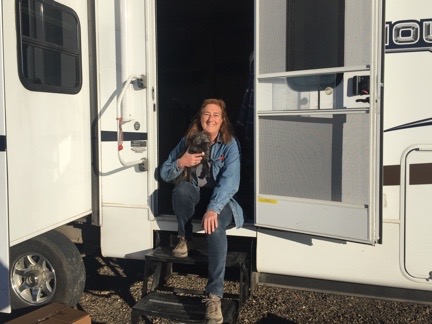
Steve took this photo of me and Penny on the steps of the Mobile Mansion that last morning in Quartzsite.
I made a bunch of phone calls to arrange for the Mobile Mansion’s landing gear control card to be replaced. I’d wanted it done near Phoenix, but I wound up making an appointment in Quartzsite. That actually worked out much better for me, since they’d let me park it there until I returned in February, saving me the bother of worrying about parking until then.
By about noon, I was ready to go. I hooked up the Mobile Mansion and pulled out. Just two stops before I left Quartzsite: a dump station to dump all of the RV’s tanks and the RV repair place on the other end of town. Traffic was horrendous. At one point, stuck in traffic on a highway overpass, a man stuck in traffic going the opposite direction gave me the thumbs up and said, “Nice rig.”

Nice rig, eh? You betcha!
I flashed my own thumbs up back at him and called out, “Thanks!”
By 2 PM, Penny and I were headed east on I-10 with the Mobile Mansion left behind. We’d be at our next destination within 90 minutes.



